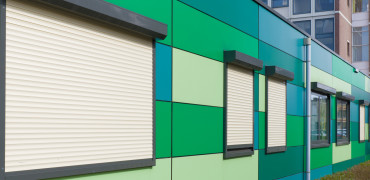The UK warehouse and logistics sector is booming. It has always been a vital element of the retail business, but with the increasing shift to online shopping, warehouses are no longer just storage centres, but distribution hubs. Customers want rapid and smooth delivery, making logistics a crucial part of the whole service experience.
The UK Warehousing Association (UKWA) estimates that warehousing in the UK accounts for 420 million sq ft of property – made up of 1,500 individual units. It is a significant part of the UK's building stock and therefore has a considerable carbon footprint.
There are practical solutions that can impact on energy use and carbon footprint
Sustainability
One result of warehousing’s rising profile is that the sector is paying more attention to its sustainability profile.
In July, specialist developer PLP announced a 343,000 sq ft 'net zero carbon ready' speculative logistics development near Sheffield. The building uses several low carbon technologies for power, heating and cooling.
This shift has partly been driven by stricter legislation on energy efficient design and carbon reduction. However, corporate clients are very keen to ensure their sustainability credentials are clear all the way along their supply chains – and this includes warehousing.
Carbon neutral
Further afield, carbon-neutral warehouses are already appearing. Property specialist JLL reports that cosmetics giant L’Oreal opened its largest logistics centre in Germany in 2019 and the site is entirely carbon neutral: “Around 7,400 solar panels supply electricity, while rainwater is used to irrigate green areas, for cleaning and for sanitation. Habitats for reptiles and birds are also part of the 100,000 square metre site.”
And in September 2019, Nike opened a 1.5 million sq ft distribution centre in Belgium that runs entirely on renewable energy – using wind, solar, geothermal, hydroelectric and biomass power.
Other options
Not all warehouses will be able to adopt sustainability at such scale. However, there are several options for cooling and heating that can have a significant impact on energy use (and therefore, carbon emissions). There are various energy-efficient versions of familiar technologies now on the market.
For example, warehouse designers and operators will be very familiar with air curtains – vital for reducing energy loss through open doors.
But Mitsubishi Electric now offers an air curtain that links to an inverter heat pump.
It's a change to the technology that reduces running costs by up to 67% - and cuts on carbon emissions too.
Efficient cooling
Another simple technology swap to consider is in cooling provision. Cooling is a big user of energy in any building, and often, the heat extracted from a space is simply ejected. But with heat recovery, this energy can be harnessed to provide heating for use in other areas of the building.
The Mitsubishi Electric Integra chiller offers simultaneous heating and cooling.
So while the system removes heat from one area of a building to cool it, the extracted heat can be used to supplement hot water provision, for example.
Renewable heating
And where large spaces require heating, the latest heat pump technology delivers an energy efficient and renewable solution. If a warehouse produces electricity from on-site renewables, then electrically-powered heat pumps are an ideal and sustainable technology.
The commercial Ecodan heat pump range from Mitsubishi Electric is a flexible option that has been specifically designed for large projects and applied successfully across a range of sectors.
What’s more, it requires only water and electric connections – making installation straightforward and fast.
Reduced operating costs
It’s not always possible to attain the heights of an on-site wind farm, but there are practical solutions that can have a significant impact on the energy use and carbon footprint of a warehouse.
Not only does this substantially cut back on operating costs, but it also enhances project sustainability.
As warehousing becomes an ever-more essential and visible part of our economy, the net-zero warehouse is closer and more achievable than you might think.
Kevin Pocock is a Business Development Manager



